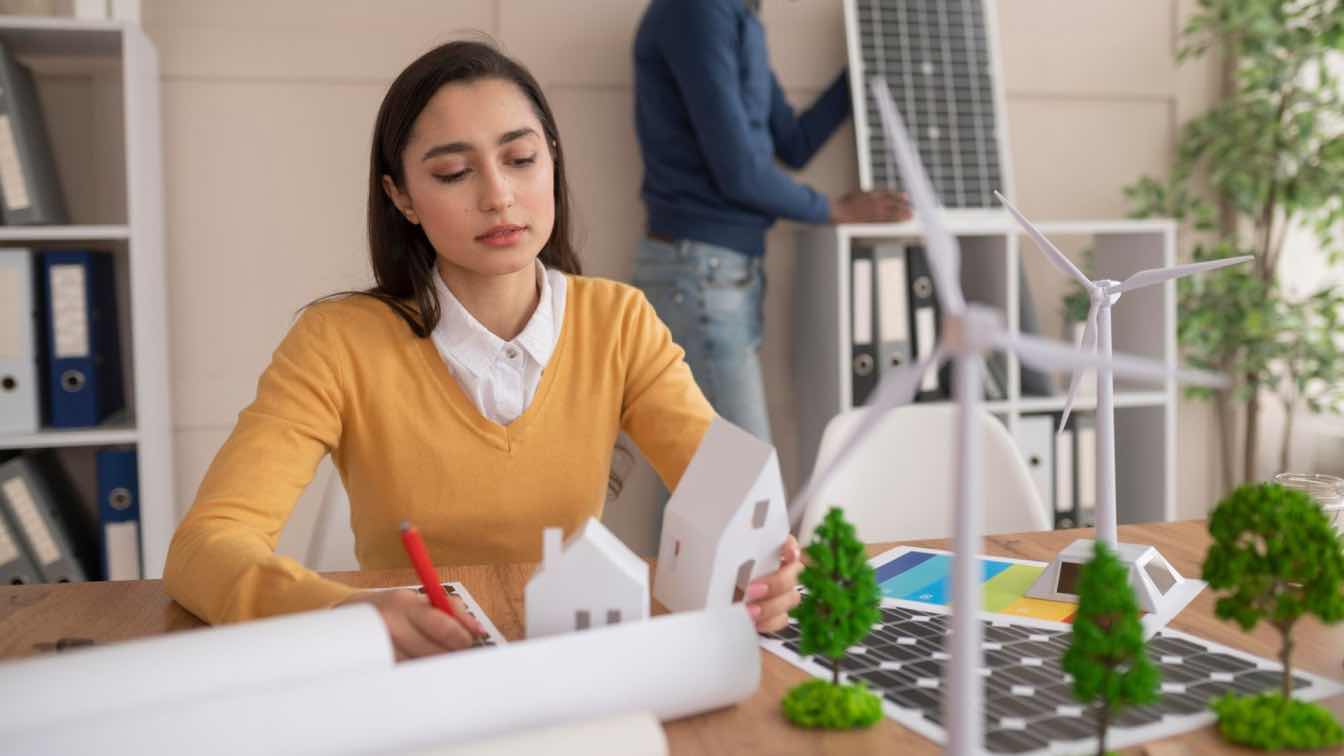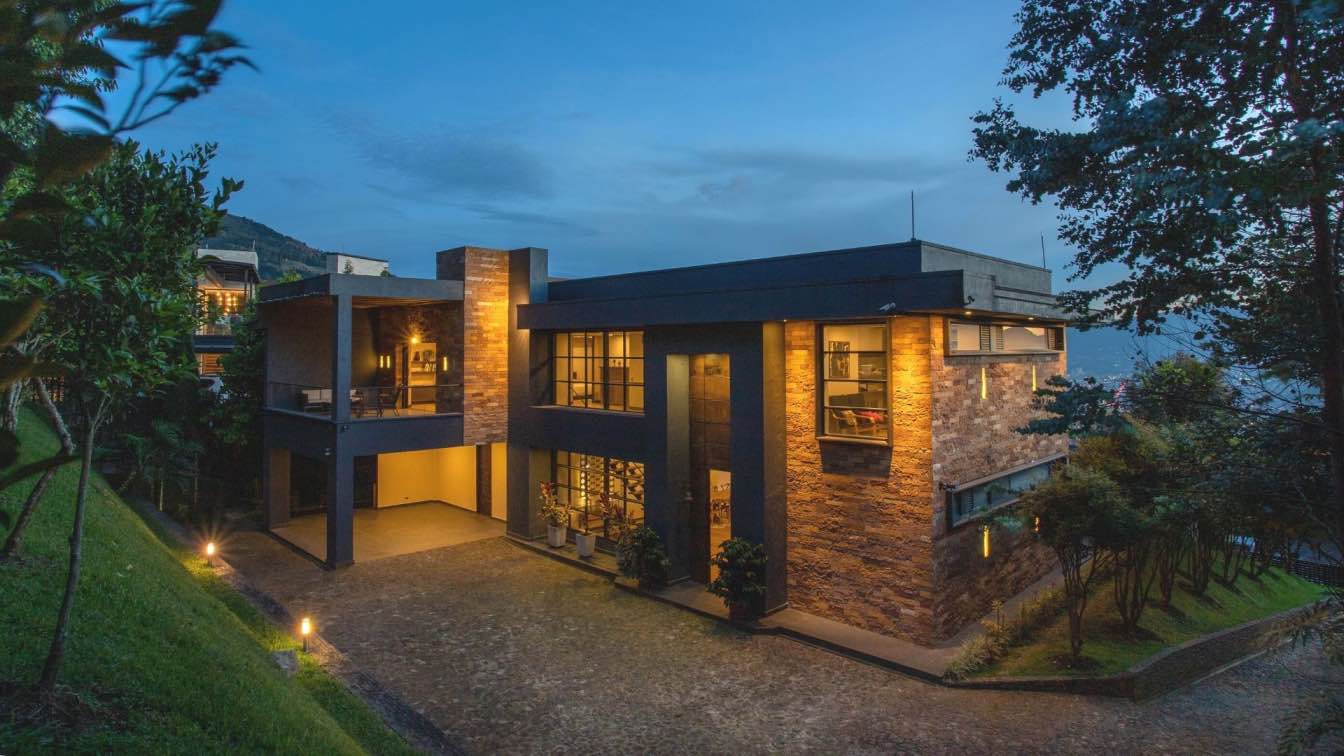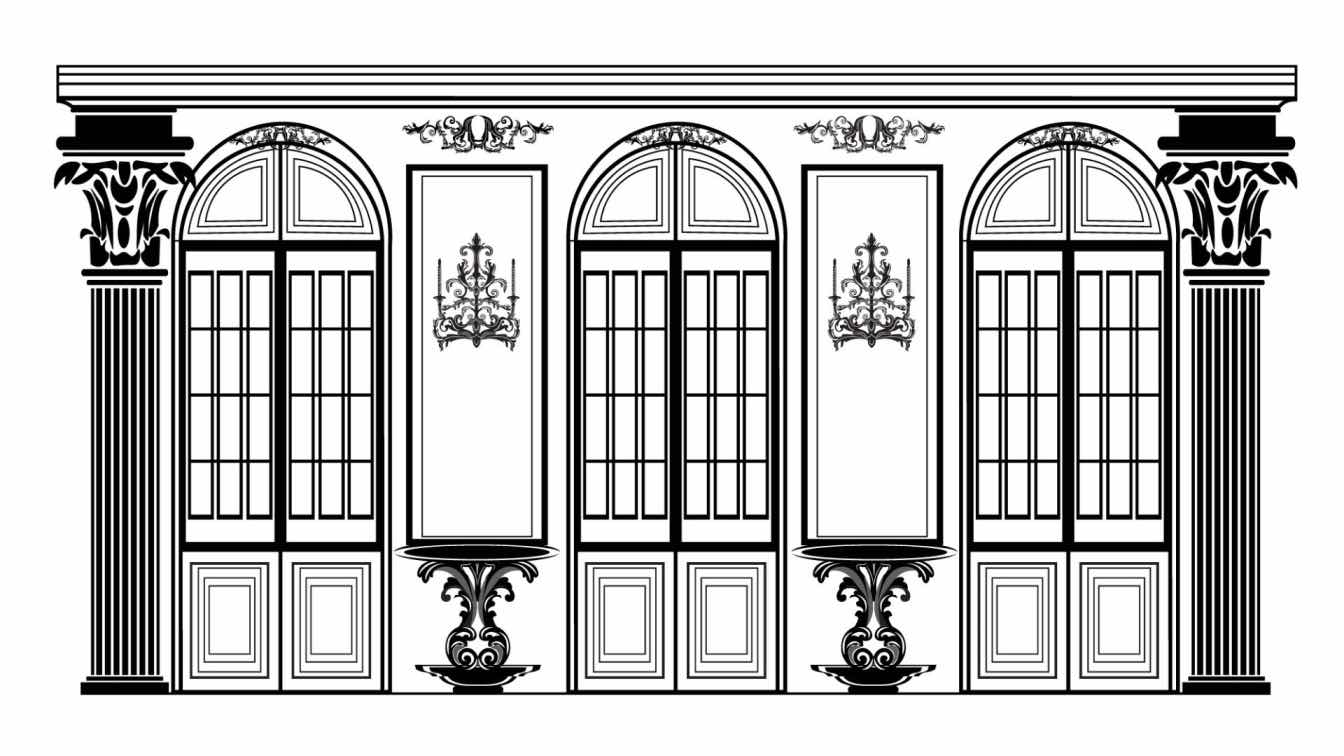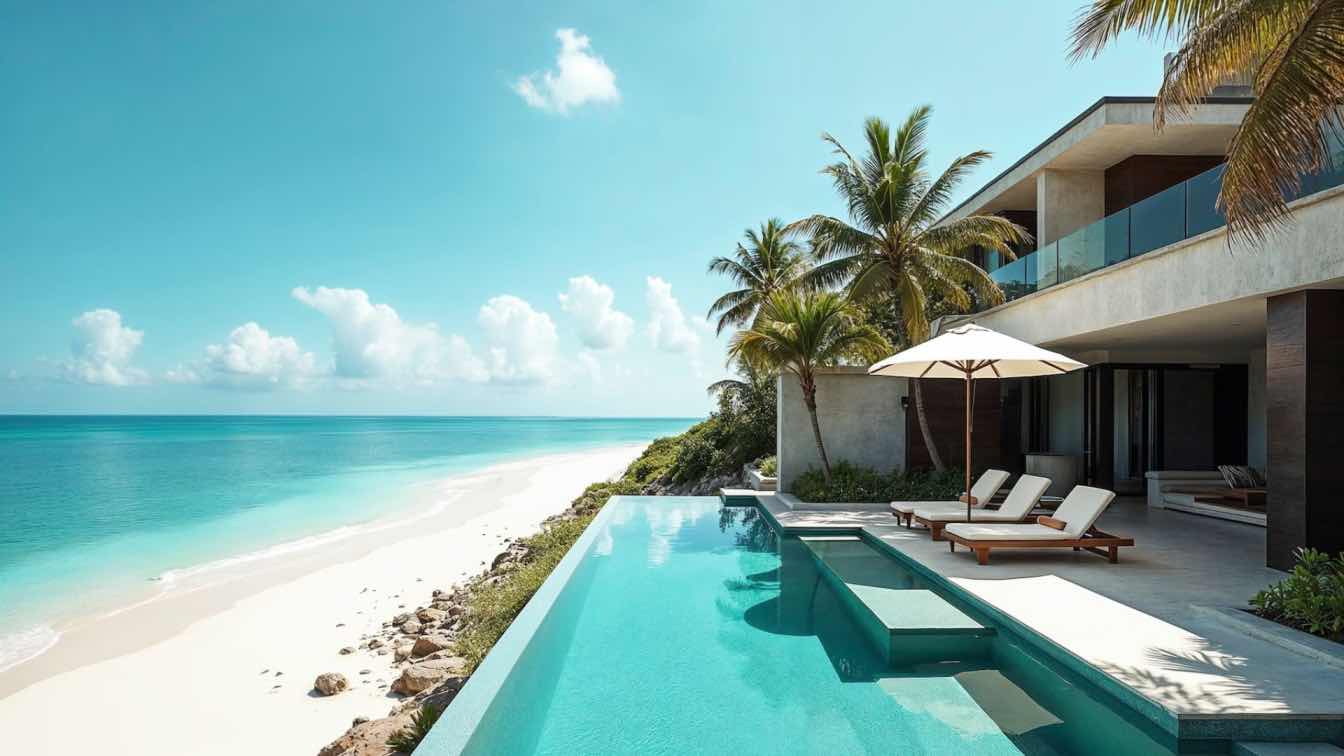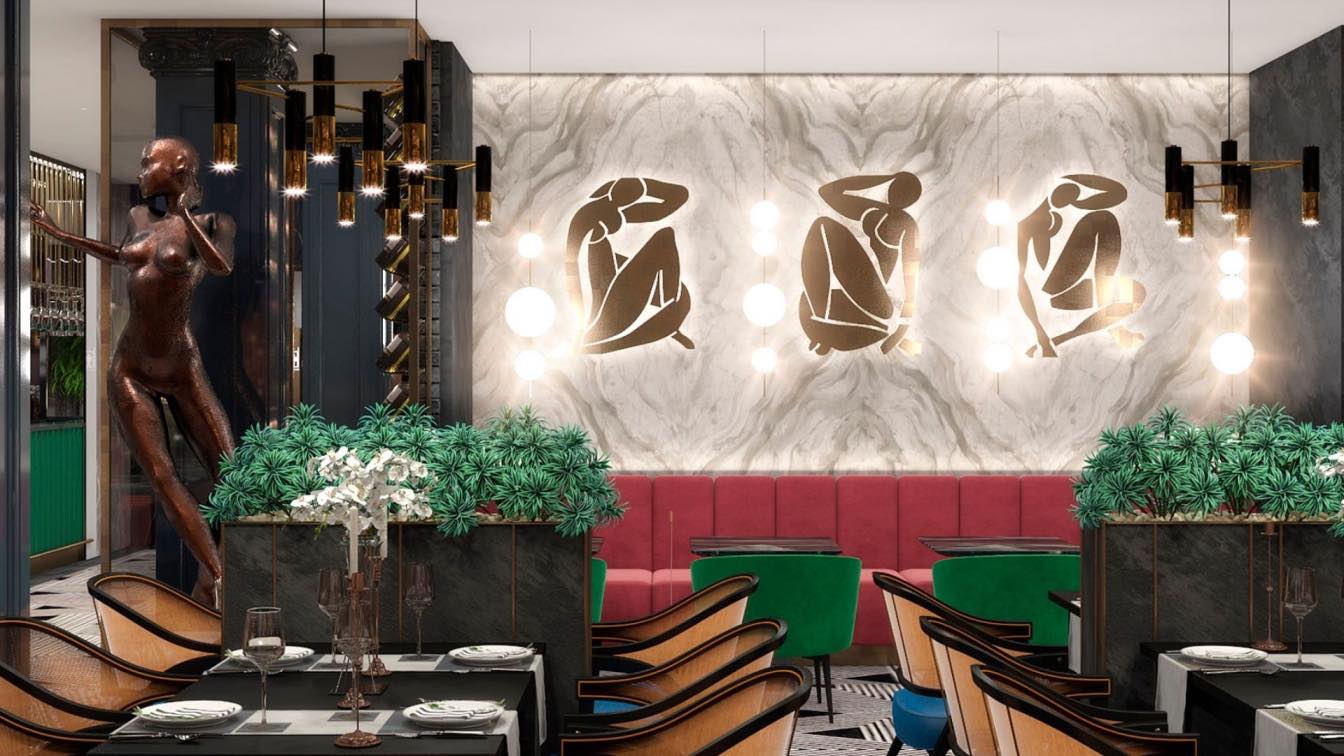Energy efficiency and climate change are becoming increasingly difficult to ignore, given rising temperatures, expensive utility bills, and the increase in major weather disasters. Reducing carbon emissions and utilizing cleaner energy aren’t just innovative architectural features but a growing necessity. Thankfully, architects and builders are evolving their construction designs to include passive and active energy efficiency without sacrificing style and quality. The latest architectural designs may look a bit different to reflect this need, but what exactly are modern architects doing?
Biophilic Design
The word “biophilic” refers to our connection to the natural world. When a building features biophilic architecture, it incorporates some element of nature into the materials or design. Living walls, or walls with plants integrated into the material, are one of the most innovative examples of a biophilic design. Green or living roofs are popular, too, and feature roofing material and a water-safe membrane to allow plant life to thrive without damaging the home. This vegetation isn’t just aesthetically pleasing; it provides natural insulation to regulate temperature. Plants also improve air quality inside and outside the building. Cities are often referred to as “concrete jungles” due to their lack of connection to nature and the heat island effect these materials bring. Biophilic designs can help mitigate the heat island effect for a more manageable urban design in terms of temperature control and energy efficiency. Plants provide a natural sanctuary for many animals, which can give back to the environment while still utilizing land. Vertical gardens, rooftop gardens, and indoor courtyards are additional examples of biophilic design. As a bonus, building occupants can become more in touch with nature, which can improve mental health!
Advanced Insulation
Insulation is one of the best defenses against energy inefficiency in buildings. It helps regulate temperature, reducing the need for excess heat or air conditioning. Architects and builders are working together to develop more advanced insulation techniques to keep homes cool in the summer and warm in the winter without wasting excess energy. Rigid foam insulation, aerogels, vacuum-insulated panels, and phase-change materials can all work with a building’s passive efficiency design to reduce the energy needed to regulate temperature. These materials are innovative because of their lightweight design, sustainability, and convenience of installation, making the construction process more effective as well.
Clean Energy Integration
More buildings are being constructed with the intention of harnessing clean, renewable energy like solar, geothermal, or wind power. Architects integrate solar panels directly into buildings when drawing up blueprints. Solar panel roof tiles and rooftop wind turbines are some of the many innovative ways architects are changing the game when it comes to sustainable designs. Walls, roofs, and floors are all designed with clean, renewable energy in mind. As renewable energy sources decrease in cost over time, they’re becoming the preferred method for energy in both residential and commercial homes. New constructions that incorporate these types of energy directly into their design are becoming much more appealing.
Net-Zero or Passive Efficiency
A building isn’t energy efficient solely because it features solar panels or wind turbines. There are many passive ways a building can reduce its energy consumption. Energy-conscious buildings incorporate better efficiency in their shape, size, or materials. Some buildings are even designed for net-zero emissions, meaning they produce as much energy as they consume. These types of architecture are ideal in a world where energy costs and regulations are rising. Insulation is one of the many types of passive building designs that increase energy efficiency. Sealed high-performance windows that filter UV light are another way to reduce a home’s energy use by keeping heat out while providing natural light. Roof shape, material, and color can help reflect excess heat and light to regulate temperature better. Even a building’s location and position can affect energy efficiency. Architects must evaluate all variables and elements to provide a design that reduces energy dependency.
High-Tech Architecture
Smart technology is here to stay. Business owners, property investors, and homeowners are all adapting to quicker and more efficient ways to automate their building’s systems. Technology is an advantage for architects looking to improve energy efficiency. Smart thermostats, appliances, and lighting systems can be directly incorporated into a building’s design, allowing for reduced, tailored energy use according to occupant needs. Energy levels can be more accurately monitored and adjusted, making it easier for occupants to be aware of energy consumption. High-tech architecture combined with renewable energy makes it extremely easy to produce an energy-efficient or net-zero building design. Smart systems can even monitor HVAC and water heating systems to improve indoor air quality and water conservation.
Conclusion
The future is here when it comes to energy-efficient buildings. As smart technology and renewable energy become more accessible to the average building owner, architects are evolving and adapting to include eco-friendly features in their blueprints. Trends like passive energy efficiency, high-tech architecture, and innovative insulation approaches allow building owners, architects, and builders to combat rising energy costs and regulations, as well as the effects of climate change. As the world grows increasingly sustainable in its architecture, these trends will be at the forefront of the battle against climate change.

